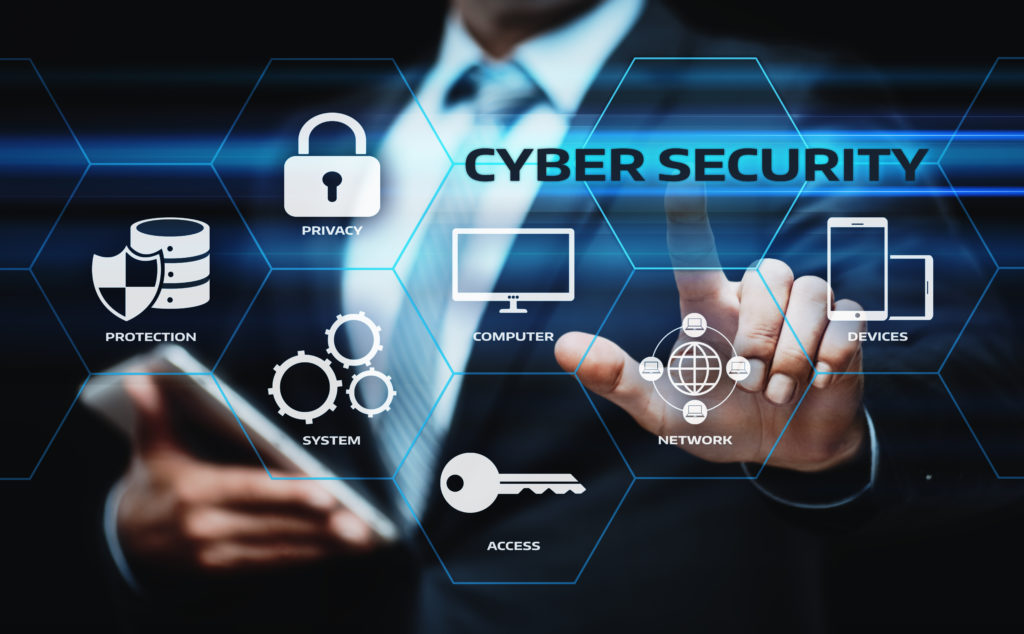Just How Information and Network Protection Secures Against Emerging Cyber Threats
In an age marked by the fast evolution of cyber dangers, the significance of information and network safety and security has never been a lot more pronounced. As these risks end up being more complex, understanding the interaction between information security and network defenses is vital for reducing threats.
Comprehending Cyber Threats

The ever-evolving nature of innovation continually presents brand-new vulnerabilities, making it critical for stakeholders to remain vigilant. Individuals may unconsciously come down with social engineering techniques, where aggressors manipulate them into disclosing delicate information. Organizations face distinct difficulties, as cybercriminals frequently target them to manipulate beneficial information or interfere with operations.
In addition, the surge of the Internet of Points (IoT) has broadened the strike surface area, as interconnected tools can serve as access factors for assailants. Recognizing the value of durable cybersecurity techniques is vital for mitigating these threats. By fostering a thorough understanding of cyber organizations, people and dangers can carry out effective strategies to guard their digital assets, ensuring durability in the face of an increasingly complicated threat landscape.
Trick Elements of Data Security
Guaranteeing information safety needs a diverse technique that encompasses different crucial parts. One essential component is information file encryption, which changes sensitive information right into an unreadable format, easily accessible only to authorized users with the suitable decryption tricks. This acts as an essential line of protection versus unapproved gain access to.
One more important component is access control, which controls that can check out or adjust data. By implementing stringent user authentication protocols and role-based accessibility controls, organizations can reduce the danger of expert risks and data violations.

In addition, information concealing techniques can be employed to shield sensitive information while still permitting for its usage in non-production environments, such as screening and growth. fft perimeter intrusion solutions.
Network Protection Techniques
Implementing robust network safety methods is necessary for securing a company's electronic facilities. These strategies include a multi-layered method that includes both software and hardware options developed to protect the stability, privacy, and schedule of information.
One vital element of network safety and security is the release of firewalls, which work as a barrier between trusted inner networks and untrusted exterior networks. Firewall softwares can be hardware-based, software-based, or a mix of both, and they help filter outbound her explanation and incoming web traffic based upon predefined security rules.
Furthermore, intrusion detection and prevention systems (IDPS) play a vital duty in keeping track of network traffic for dubious tasks. These systems can alert managers to potential breaches and take action to alleviate threats in real-time. Regularly updating and patching software program is also vital, as susceptabilities can be exploited by cybercriminals.
Additionally, carrying out Virtual Private Networks (VPNs) ensures protected remote access, securing information transmitted over public networks. Lastly, segmenting networks can minimize the attack surface and include potential breaches, restricting their effect on the total infrastructure. By taking on these techniques, companies can effectively fortify their networks versus emerging cyber threats.
Finest Practices for Organizations
Establishing best techniques for companies is critical in keeping a strong safety and security posture. A thorough strategy to information and network security starts with normal danger evaluations to identify susceptabilities and prospective threats.
In addition, constant employee training and recognition programs are necessary. Workers need to be educated on identifying phishing attempts, social engineering tactics, and the relevance of adhering to security procedures. Regular updates and spot management for software and systems are additionally important to shield against recognized vulnerabilities.
Organizations have to check and develop occurrence response prepares to ensure preparedness for possible breaches. This includes developing clear communication networks and roles during a security event. Information encryption must be used both at rest and in transportation to guard sensitive info.
Last but not least, conducting periodic audits and conformity checks will certainly help make sure adherence to relevant guidelines and well-known policies - fft perimeter intrusion solutions. By complying with these finest techniques, organizations can substantially boost their strength against emerging cyber risks and secure their important possessions
Future Trends in Cybersecurity
As companies browse a significantly complex digital landscape, the future of cybersecurity is poised to develop considerably, driven by moving and emerging modern technologies danger standards. One popular fad is the integration of artificial intelligence (AI) and maker discovering (ML) right into protection structures, permitting real-time danger detection and reaction automation. These modern technologies can assess substantial quantities of information to determine anomalies and possible violations a lot more efficiently than conventional methods.
Another critical fad is the increase of zero-trust design, which requires continual verification of user identifications and gadget safety, despite their area. This technique reduces the risk of expert threats and enhances protection against exterior assaults.
Additionally, the increasing fostering of cloud services demands durable cloud safety and security strategies that resolve distinct susceptabilities connected with cloud environments. content As remote job comes to be an irreversible fixture, safeguarding endpoints will additionally become extremely important, resulting in a raised concentrate on endpoint detection and feedback (EDR) services.
Last but not least, regulative conformity will remain to shape cybersecurity methods, pressing organizations to take on much more Read Full Article stringent information defense steps. Welcoming these trends will certainly be necessary for organizations to fortify their defenses and browse the evolving landscape of cyber risks successfully.
Conclusion
In conclusion, the implementation of durable information and network safety steps is important for companies to guard against emerging cyber hazards. By making use of file encryption, gain access to control, and effective network security approaches, organizations can considerably reduce susceptabilities and secure sensitive information.
In an age marked by the quick development of cyber threats, the relevance of data and network safety and security has never ever been a lot more pronounced. As these hazards end up being extra complicated, understanding the interaction between data protection and network defenses is crucial for alleviating threats. Cyber risks encompass a large array of harmful activities aimed at endangering the confidentiality, honesty, and availability of networks and information. An extensive strategy to data and network safety begins with normal risk evaluations to recognize vulnerabilities and prospective dangers.In conclusion, the application of durable information and network safety and security actions is important for companies to guard against emerging cyber dangers.